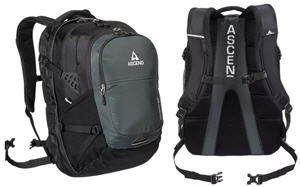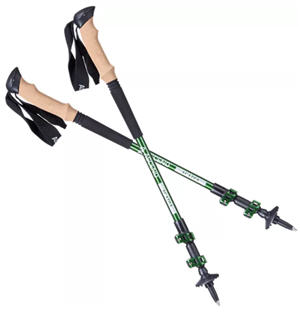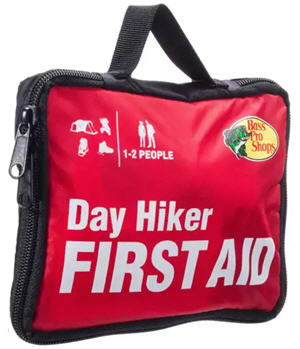
Day hiking for most folks is a much needed, quick getaway from life's demands. An easy walk along a paved trail at a metro park or a 3- or 4-mile trek up a mountain and back can attract different types of hikers.

However, there's one common thread for day hikers: a daypack. Day hikes of any length or effort are best supported with a daypack. They hold many gear items, from a GPS and map, and/or a small water purifier like the SteriPEN Classic 3 and ample food supply for longer hikes. But no matter what type of hike is on the schedule, your daypack should be stocked with the following five essential items:
Tip: The Ascend Folsom 39L Daypack is a roomy and versatile pack that's great for campus or the trail. This backpack comes equipped with padded shoulder straps and a padded air mesh back panel outfitted with ventilation channels for cooling comfort.

Pocket Knife
1. Pocket knife — The pocket knife is one tool that handles multiple tasks. Peeling an apple or cutting a stick to serve as a splint, a sturdy blade is vital. A locking blade is a safe way to go and offers a secure tool when down pressure is needed to make the cut or chop.
2. Duct tape — A piece of this miracle-fix material holds a loose boot sole on, stops a failing trekking pole from collapsing on itself, and serves as an efficient patch on rain gear torn by branch or thorn.

Tip: The Acadia Trekking Poles from Ascend are constructed with multiple tips for great performance while hiking and wading. They have a 3-section design and the Acadia extends from 26" to 53" with an easy to use, Quick-lock lever system to set the pole at the perfect height.
3. Emergency shelter (space blanket) — If things go bad and you have to spend a night or even a few hours on the trail waiting on help to arrive, this little sheet of metalized fabric will keep you warm and dry. Emergency blankets like Heatsheets also make a ground cloth for sitting and enjoying lunch. The bonus is it weighs little and folds to space-saving size.

Tip: Emergency Space Blanket is a handy 2-oz. blanket measures 56" x 84". In cold climates, it can keep a stranded skier, snowmobiler or camper from freezing even at sub-zero temperatures. And it packs up compactly to store in your vehicle or keep in a pack. Per each.
4. Compass — A GPS is a fun and common tool found in the hands of many day hikers on the trail. Smart phones sporting a GPS function work well as long as cell towers are within range. So why a tote a compass? It's a well-functioning back up that doesn't need batteries, towers or satellites. Just be sure you polish up your compass reading skills before setting out.

Tip: Go where other can't go, Use the Cammenga 3H Tritum compass to determine azimuths or bearings, orient a map, determine location of a terrain feature or follow a course.
 Great Compass! I've been doing more backcountry hiking and hunting and I usually reference my compasses just to keep in practice, but the cheap ones just aren't that reliable. So I decided spend some money on a good one. Already used it twice in the backcountry in Montana. Always works and its made very heavy duty! Buy this compass and you'll never need another (unless you lose it)!
Great Compass! I've been doing more backcountry hiking and hunting and I usually reference my compasses just to keep in practice, but the cheap ones just aren't that reliable. So I decided spend some money on a good one. Already used it twice in the backcountry in Montana. Always works and its made very heavy duty! Buy this compass and you'll never need another (unless you lose it)!
5. First-aid Kit — Not a full blown, emergency surgery kit, but a basic compact first-aid kit for scrapes and cuts. Be sure the kit includes a couple doses of pain relievers that also reduce inflammation, in case you twist an ankle.
- 5779 views

